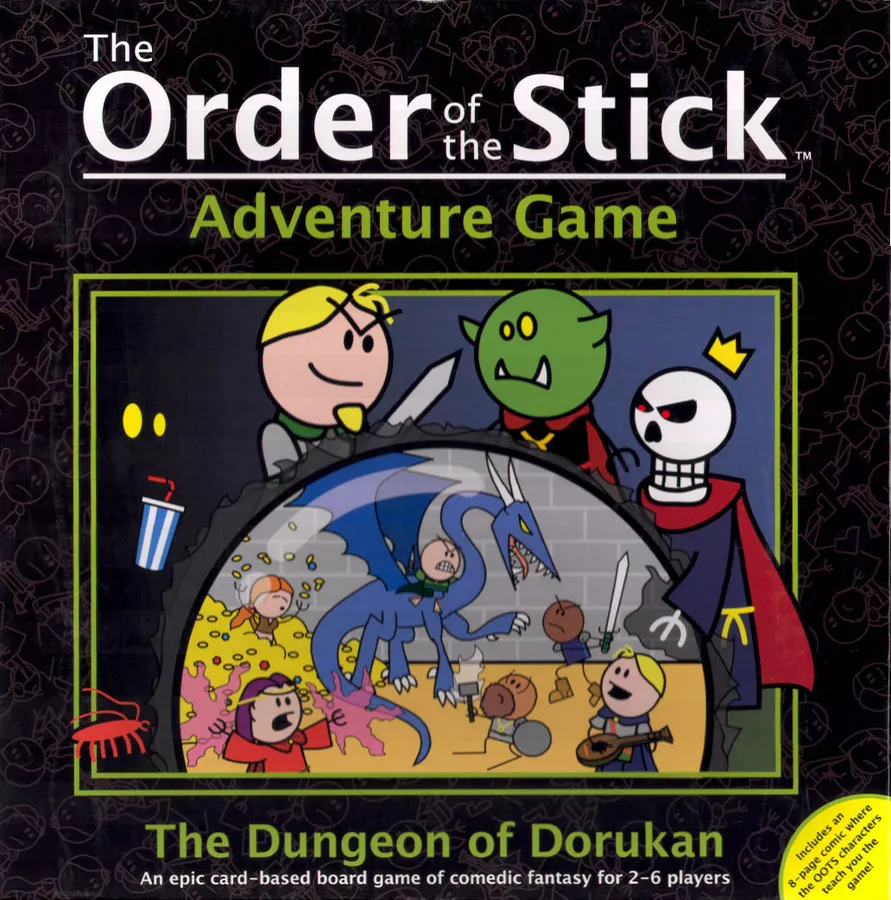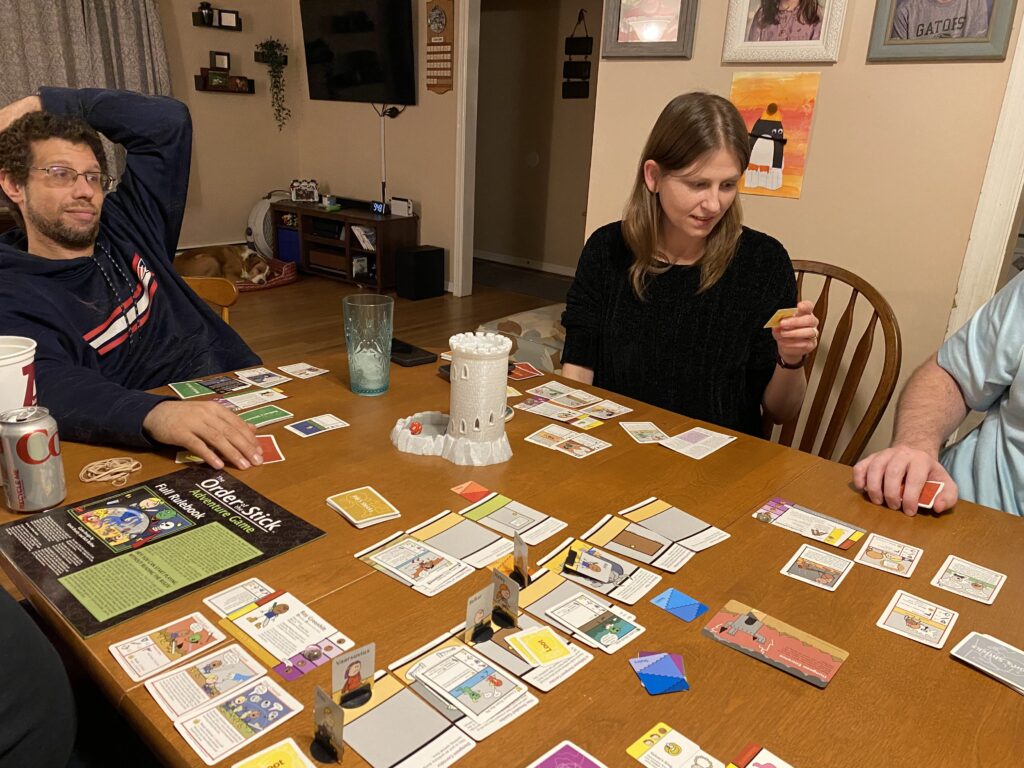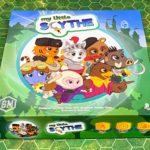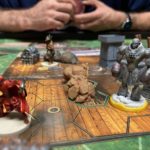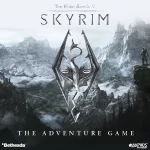When I saw this tabletop RPG based on “The Order of the Stick” in the used game display bin for $20, I liked that it could play with up to six people, and looked pretty darn hilarious. What I maybe should also have noticed is that a single game can take from three to six hours.
Players take on the roles of members of the Order of the Stick — Roy (human fighter), Durkan (dwarf cleric), Haley (human rogue), Elan (human bard), Belkar (halfling ranger), and Vaarsuvius (elf wizard). Any characters not chosen by a player follow the players around the game board as NPCs. Said adventurers are exploring the Dungeon of Durokan, that underground edifice where we first met the order of the stick lo these twenty years ago.
Players start with three “schticks” that determine the sorts of things they can do in battle. I played Vaarsuvius; my schticks were fireball (that could empty multiple rooms), magic missile, and a sleep spell that would force a draw.
Each player also gets battle cards, which consists of monster cards and “screw this” cards — both of which are played to help or hinder other players. Because this is not a cooperative adventure.
The actual goal of the game is to explore the dungeon, defeat its many challenges (including monsters, traps, and the Order of the Stick’s mirror universe rivals, the Linear Guild), and finally reach the lair of the strip’s ultimate villain, the lich Xykon.
But, just as in the comic, something always seems to come up.
The basic exploration loop is to move to a new spot, draw a room from the Dungeon Room deck and place it on the table, then move into it. The room isn’t empty, though — the next player in line selects a monster for you to fight. On deeper levels, more players contribute monsters to the monster stack — and that’s what you fight. You initially defend, then attack, with the monsters attacking and then defending. You can use schticks to damage, defend or hide. If you have some loot that another character would want, and that other character happens to be on the same floor, and you haven’t screwed them over lately, they might offer to help by giving you from +2 to +6 to your rolls in exchange for that loot. Loot is victory points, so giving up victory points for help can be a tough decision at times.
If another player is in the room, you can also choose to attack them with the same rules as battling monsters. Why do that? Well, they might have some loot you want.
Perennial difficult party member Belkar seemed to have picked my character, Vaarsuvius, as his particular target, as he shut down my fireball spell and made my rolls more difficult just for the lulz. This came back to bite him when he asked for help later on, and none of the other players was all that inclined to give him a hand.
Death returns you to the dungeon entrance, where you must then make your way back to the party.
In two hours of play, we’d only started exploring the second floor of the dungeon, of the four we would need to explore before we got to meet Xykon. If we play again, we’re probably going to be making some homebrew rules to speed things along a bit — more starting loot, more schticks. Maybe a dungeon that isn’t quite so deep.
The game does an incredibly good job of putting you in the mismatched shoes of a member of the Order of the Stick. Those few times I was able to unleash my godlike magical powers felt amazing, and everyone at the table was kind of annoyed at Belkar. Nobody (unsurprisingly) wanted to play Elan, and so he happily followed along, always eager to lend a hand to anyone who actually occasionally needed him.
This game came out some time ago, and had a second edition that included both this base game and its expansion. It is very much its own thing, but is held back by its core mechanic of screwing over the other players. Some gaming tables might find that exciting, but I doubt I’ll be bringing “The Order of the Stick: The Dungeon of Dorukan” back to family game night any time soon.
It was pretty funny, though.
